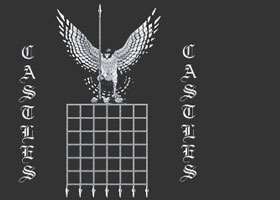Castle MoatsCastle Moats - What was the Origin, Meaning or Definition of the Castle Moat?
- Description of a medieval castle moat
- What was the main purpose of moats?
- How did moats help with Castle defenses?
- How deep were the moats made?
Purpose of the Castle Moats
The defensive purpose of filling the deep Castle Moats with water was: - To make the moats too deep to simply wade through
- To make anyone attempting to swim across a highly vulnerable target
- To reduce the risk of tunnelling - one of the most serious forms of attack was to undermine part of a castle. The 'miners' were called Sappers. The attackers would dig a tunnel underneath one of the corners using timber props (this process was called sapping). The tunnel would be packed with brush wood. The brush wood would be set on fire and the corner would collapse! The structure of the castle would be weakened and the weight of the castle would bring the walls caving in and the whole castle would collapse
- The vast amount of water would reduce the risk of potential fires
Sometimes it was impractical to fill a moat with water so wooden stakes were embedded in moats. The purpose of filling the Castle Moats with wooden stakes was to: - To create a difficult barrier for men and horses
Origin, Meaning of the word 'Moat'
The Origin and Meaning of the word 'Moat' derives from from the Middle French word 'motte' meaning mound or hill. The French word was translated into the Middle English word 'moat'. Forerunner of the Castle Moats - Norman Motte and Bailey Castles
The forerunners of Castle Moats was introduced with Norman Motte and Bailey castles during the Medieval period 1066 - 1154. Motte and Bailey Castles were built on top of hilltops. A high and extremely steep mound was built (called the Motte) which had very steep sides and a Tower was built on the top of it. The process of excavating the earth to build the massive mound, which was the motte, created a highly convenient defensive ditch at the base of the motte and surrounding the whole of the bailey! The ditch later became known as the Moat. Introduction of Castle Moats - Medieval Castles
The Castle Moats was introduced with Plantagenet castles during the Medieval period 1154 - 1485. The most prolific of the castle builders were the Plantagenet English King, Edward I. These great old castles were built for Medieval warfare and defence and new parts of the castle were designed accordingly! The Castle Moats feature in the Medieval castles built by the Plantagenets. | 
